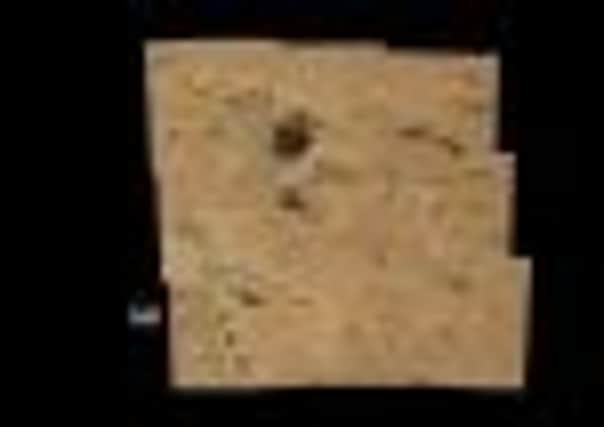Mars rover finds evidence of ‘waist-deep stream’


The robot vehicle has found conclusive evidence of “vigorous” waterflow some time in the planet’s distant past. US scientists estimate the stream was between several inches and a few feet deep and fast-flowing.
Images from Curiosity’s mast cameras revealed two mounds of rock containing rounded stones ranging in size from that of a grain of sand to a golf ball. Experts say they could only have been formed by flowing water.
Advertisement
Hide AdAdvertisement
Hide AdSenior mission scientist Rebecca Williams, from the Planetary Science Institute in Tucson, Arizona, said: “The shapes tell you they were transported and the sizes tell you they couldn’t be transported by wind. They were transported by waterflow.


“This is wonderful ‘concrete’ evidence of water-transported gravels on Mars. It is very exciting to have ground-truth confirmation of the hypotheses developed from analysing orbital data.”
Ms Williams said the aim was now to try to calculate the amount and duration of waterflow at the site, “a critical step in identifying habitable environments on Mars”.
Curiosity landed in the 96-mile-wide Gale Crater, near the Martian equator, on 6 August. The site of the discovery is between the north rim of the crater and the base of Mount Sharp, which rises to a height of 18,000ft and is the rover’s ultimate destination.
Scientists think the outcrops resulted from water transporting gravels downhill to the bottom of an alluvial fan. This is a fan-shaped layer of sediments formed when a fast-flowing stream spreads out across a flat plain. Other materials accumulating on top of the gravels eventually cemented them together.
“From the size of gravels it carried, we can interpret the water was moving about 3ft per second, with a depth somewhere between ankle and hip deep,” said Curiosity science co-investigator Dr William Dietrich, from the University of California at Berkeley.
“Plenty of papers have been written about channels on Mars with many different hypotheses about the flows in them. This is the first time we’re actually seeing water-transported gravel on Mars. This is a transition from speculation about the size of stream-bed material to direct observation of it.”
The large number of channels suggests that flows continued over a long period of time, but scientists cannot yet say how long ago the water flowed, or for what period of time.
Advertisement
Hide AdAdvertisement
Hide AdBillions of years ago Mars is believed to have had a thick atmosphere, surface water, and possibly life.
Curiosity’s mission is to look for evidence of conditions on Mars that might have have supported living organisms.
During its two-year primary mission the rover, officially called the Mars Science Laboratory, will climb up the lower slopes of Mount Sharp.
Clay and sulphate materials detected there from orbit may preserve carbon-based organic chemicals that form the building blocks of life.
Scientists also announced that Curiosity was experiencing an unexpected spring heatwave.
Average daytime temperatures in Gale Crater have reached a peak of 6C, which is warm for this time of year on Mars.